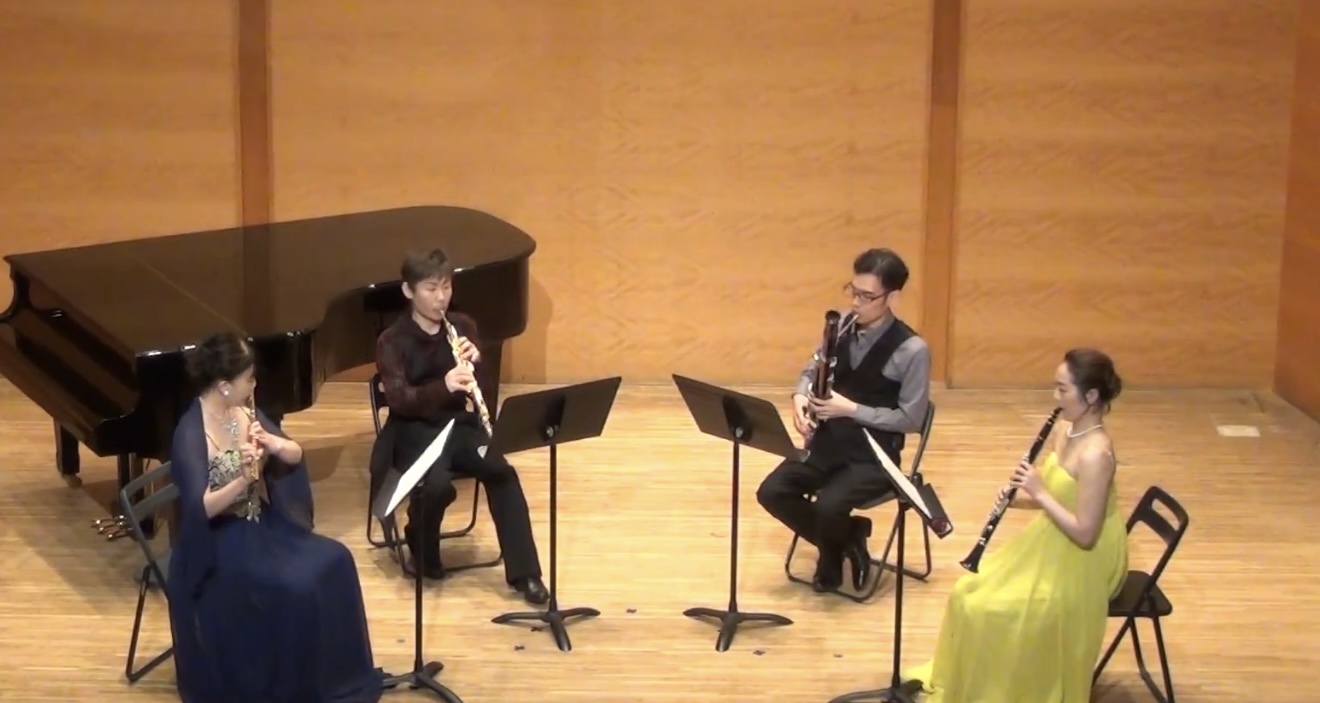
In the first two blogs, we introduced the oboe and flute, two instruments in the woodwind quartet, to help you to further understand and feel the charm of the instrument and the ensemble. Today, Six Months Rebellion Music will continue to explain the clarinet, an important component of the woodwind quartet.
Destenay, Trio in B Minor for Piano, Oboe and Clarinet, Op.27 – Camerata Pacificahttps://youtu.be/_9D0D2jVVwY
Although the difference between clarinet and oboe is only one word, the difference between them is very big. As we used to call the oboe "lyrical soprano", we willcall the clarinet "dramatic soprano" here. Do you know why the music industry gives the clarinet this title? Do you want to know any instrument that can save energy and breath more than flute? Today, we will introduce the clarinet which belongs to the woodwind instruments and answer your questions.
Clarinet:

The clarinet is composed of a mouthpiece, two sections, upper section, lower section and bell mouth, which hasone more part than the oboe and flute introduced previously. Therefore, the assembly method is slightly different, especially when it comes to the collision and extrusion of keys. We have previously introduced that the reed of the oboe is composed of two asparagus slices, while the reed of the clarinet only needs one. Its reed is very similar to saxophone but much smaller than the latter's reed.

In fact, the birth and use of the clarinet were later than those of the oboe and flute we introduced before. Mozart, a famous composer, was immediately impressed by the timbre of the clarinet after he heard the clarinet for the first time, and wrote to his father, saying: If there were clarinets in our band, how wonderful sound the flute, oboe and clarinet would make. After that, the clarinet became the youngest woodwind instrument in the orchestra. Mozart also created a series of music for the clarinet, such as the most famous k622 Clarinet Concerto in A Major. He also gave the clarinet many opportunities to express itself in his symphonies, which is enough to show Mozart's love for the clarinet. Of course, Berlioz, Beethoven Saint Saens and other composers are full of praise for the timbre and expressiveness of the clarinet.

Wolfgang Amadeus Mozart: Clarinet Concerto in A major, K.622https://youtu.be/YT_63UntRJE
Our contemporary definition of the clarinet is generally that it is a cylindrical instrument composed of five detachable tubes. The vibration of the reed drives the vibration of the air column in the instrument to produce sound. At present, the clarinet is generally made of ebony, mahogany or hard rubber, with 17 standard tone keys and a wide range of nearly four octaves.
In the previous introduction, we called the oboe "lyrical soprano" and the flute "coloratura soprano", and the clarinet "dramatic soprano". At the same time, many people called the clarinet "speaker" in the orchestra, mainly used for the middle and low voices in the woodwind quartet.
Clarinet's timbre characteristics are very unique and the playing dynamics vary greatly, especially when playing weakly. Its timbre of each range is very obvious. It can play singing melodies that express emotions, and also can play sentences full of techniques. No matter what kind of skills, it can be easily interpreted by the clarinet.

Bass area: The timbre is very rich, which can interpret very solemn and sad personal feelings or the part of the story drama with strong color, so that the audience can hear the conversion of feelings and plots, and at the same time, it can remind people that the picture of the story is a musical instrument with strong description ability, so it is also called "speaker".
Midrange: However, the midrange of the clarinet is very different from that of the low range. Its voice in this range is very warm and soft, with a little nasal sound. It is very suitable for expressing some lyric, gentle and pastoral feelings. If we compare its low range to "cold winter", its midrange is "spring".
High voice area: The high voice area of the clarinet is bright and full of singing quality, good at expressing joy and excitement, but the volume and power of this sound area are not very large.

In addition, the clarinet instrument is relatively light and has very flexible performance. It can play a lot of melodic music and also play various performing skills flexibly. And the air use of clarinet is actually smaller than that of flute! Therefore, the clarinet is also suitable for young children who like the timbre of woodwind instruments.
The choice of Six Months Rebellion Music ,SHENYUN Nickel-Plated 17 Keys Bb Tone Clarinets Beginners& Students Clarinethttps://www.sixmonthsrebellion.com/products/shenyun-nickel-plated-17-keys-bb-tone-clarinets-beginners-students-clarinet






